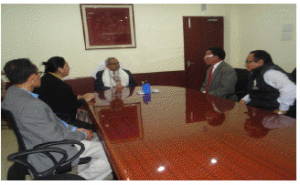In the 1960s, the state government of Orissa leased approximately 2,250 acres of land for the resettlement of nearly 2500 Tibetan refugees. The allotment was provided so the Tibetan refugees could develop a sustainable livelihood and self-supporting community while in exile.
In 1963 the Phuntsokliong Tibetan settlement, Orissa, was officially established. The majority of the refugees were farmers and nomads in their homeland. With their skills and knowledge they successfully cultivated the previously barren land into fields of crops, primarily growing maize, ragi, and rice. The agricultural development of the region has proved to be an important source of income for the settlement, and more than 70% of the population is engaged in agriculture.
The state government’s intention was for the land lease to be extended every 10 to 20 years, providing the farmers with Patta documents (ie Government land lease documents) that established their lawful possession of the land. Yet, in 2008 when the Tibetans attempted to renew the lease their presence was challenged. An oppositional party accused the Tibetan residents of illegally encroaching on the land, and pressured local authorities to not extend the land lease Patta to individual farmers. The oppositional party also raised red flags in the middle of the Tibetan farmers’ fields, a symbol that they were claiming ownership of the land. This interference prevented Tibetan farmers from cultivating their fields for an entire season. This inability to cultivate was devastating for the Phuntsokliong Tibetan settlement which incurred heavy economic losses.
The Central Tibetan Administration, Tibetan Settlement Office, Local Tibetan Assembly, and Multipurpose Tibetan Co-operative Society approached authorities to resolve the situation. These efforts were successful, and beginning on April 30, 2013 temporary land lease Patta were issued to all of the individual farmers in the settlement. However, Patta for the community and reserve lands have yet to be issued.





 Print
Print Email
Email